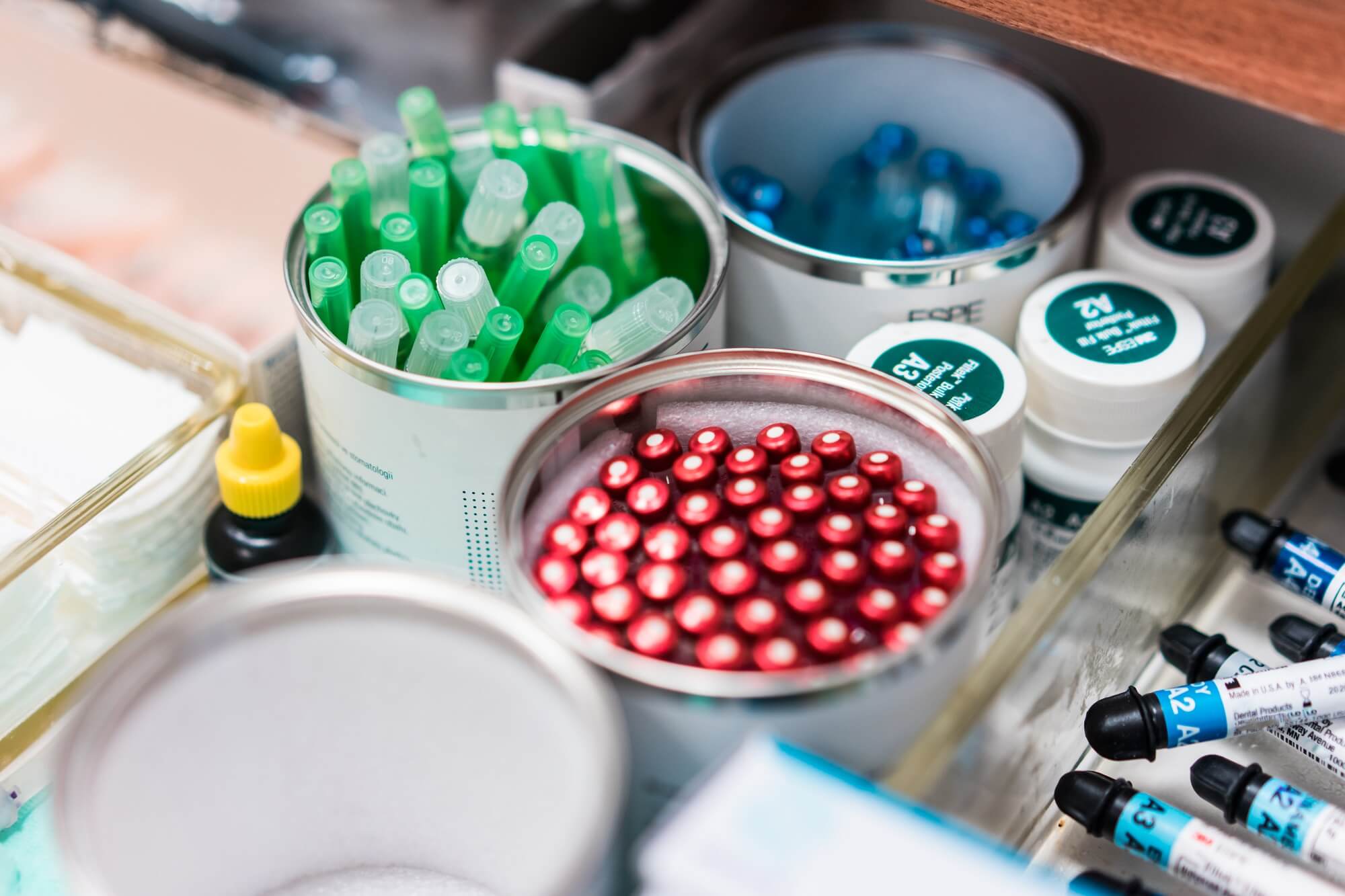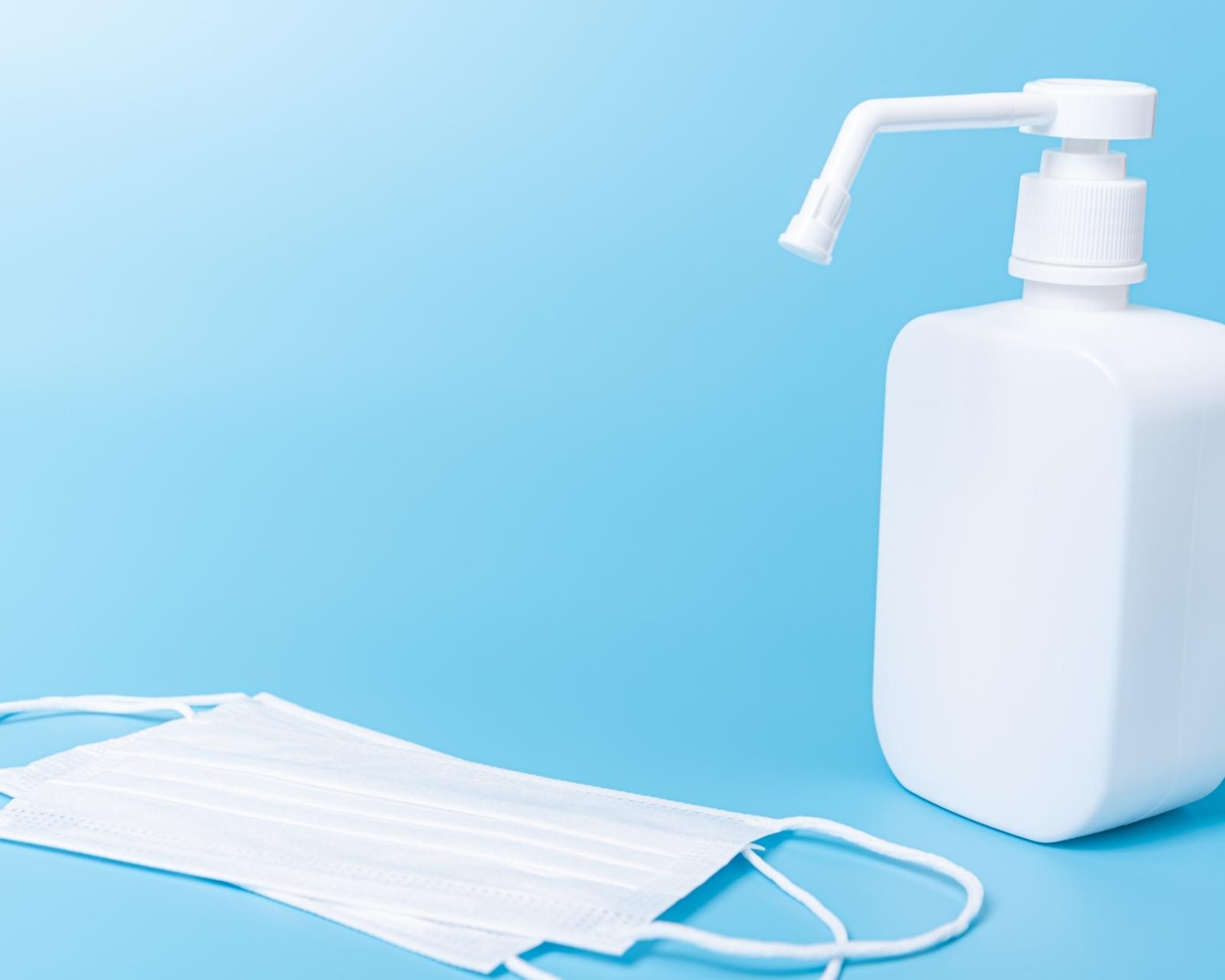Development and Validation of a Chemotherapy Management for Oncology Patients: Ensuring Safety Standards in Nursing Practice
Development and Validation of a Chemotherapy Management for Oncology Patients: Ensuring Safety Standards in Nursing Practice Chemotherapy administration plays a crucial role in the treatment of cancer patients, especially in the field of oncology. Ensuring the safe and accurate administration of chemotherapy drugs is paramount in providing effective care to patients undergoing cancer treatment. It
Development and Validation of a Chemotherapy Management for Oncology Patients: Ensuring Safety Standards in Nursing Practice
Chemotherapy administration plays a crucial role in the treatment of cancer patients, especially in the field of oncology. Ensuring the safe and accurate administration of chemotherapy drugs is paramount in providing effective care to patients undergoing cancer treatment. It involves various processes such as chemotherapy preparation, intrathecal chemotherapy, and administering chemotherapy through different routes of administration, including intravenous and oral chemotherapy.
Importance of Safe Chemotherapy Administration
Safe administration of chemotherapy is essential to prevent any adverse effects and ensure patient safety. This process includes proper drug administration, adherence to the prescribed chemotherapy regimen, and following established guidelines such as those provided by the American Society of Clinical Oncology and the Oncology Nursing Society. These standards outline protocols for the management of oral chemotherapy, preparation processes, and administration checklists to guarantee safe practices in healthcare settings.
Chemotherapy Administration in Oncology Nursing
Chemotherapy administration in oncology nursing is a critical aspect of cancer treatment, involving the preparation and delivery of chemotherapy drugs to patients. Oncology nurses play a vital role in ensuring the safe and effective administration of these medications to individuals undergoing cancer treatment. This process includes various components such as chemotherapy preparation, intrathecal chemotherapy administration, and the delivery of chemotherapy via different routes, such as intravenous and oral administration.
Importance of Following Nursing Society Chemotherapy Administration Safety Standards
It is imperative for nurses to adhere to nursing society chemotherapy administration safety standards to guarantee the safe delivery of chemotherapy to patients. By following these guidelines, nurses can minimize the risk of adverse effects and complications associated with chemotherapy administration. The protocols established by organizations like the Oncology Nursing Society outline best practices for managing oral chemotherapy, ensuring proper preparation procedures, and implementing administration checklists to uphold safe practices in healthcare settings.
Overview of American Society Guidelines for Chemotherapy Administration
The American Society of Clinical Oncology provides comprehensive guidelines for chemotherapy administration, encompassing updated protocols for the safe delivery of cytotoxic drugs to patients. These guidelines cover a wide range of aspects, including standards for pediatric oncology chemotherapy, ensuring that healthcare facilities have policies in place to adhere to the latest safety standards for chemotherapy administration. Nurses must stay informed about the 2016 revisions from the American Society to maintain high-quality care for patients receiving chemotherapy.
Key Standards for Pediatric Oncology Chemotherapy
When it comes to pediatric oncology chemotherapy, specific standards and protocols must be followed to ensure the safe and effective administration of chemotherapy drugs to young patients. The American Society of Clinical Oncology offers detailed recommendations for the management of oral chemotherapy in pediatric oncology, emphasizing the importance of precise dosing, monitoring for side effects, and providing comprehensive supportive care during treatment. Healthcare providers in pediatric oncology settings must implement these standards rigorously to safeguard the well-being of children undergoing chemotherapy.
Ensuring Safe Chemotherapy Preparation
Understanding Intrathecal Chemotherapy Procedures
Chemotherapy administration involves various procedures, including the intrathecal route, where chemotherapy drugs are delivered directly into the spinal canal. This method is commonly used to treat specific cancers, such as leukemia and lymphoma, that may spread to the central nervous system. Understanding intrathecal chemotherapy procedures is crucial for healthcare providers to ensure accurate drug delivery while minimizing the risk of complications. Nurses administering intrathecal chemotherapy must follow strict protocols to safeguard patient safety and optimize treatment outcomes.
Ensuring Safety in Administering Chemotherapy to Cancer Patients
Administering chemotherapy to cancer patients requires meticulous attention to detail to prevent medication errors and adverse reactions. Healthcare providers must follow established safety protocols during chemotherapy administration to mitigate potential risks and ensure patient well-being. This process involves verifying the correct chemotherapy prescription, confirming the route of administration, and monitoring patients for any signs of toxicity or side effects. By prioritizing safety measures, healthcare professionals can enhance the quality of care provided to cancer patients undergoing chemotherapy treatment.
Utilizing Chemotherapy Administration Checklists
One effective strategy to enhance the safety of chemotherapy administration is the use of structured checklists. These checklists serve as a systematic guide for healthcare providers, outlining essential steps in the chemotherapy preparation process, drug administration procedures, and post-administration monitoring. By utilizing chemotherapy administration checklists, healthcare facilities can standardize practices, reduce errors, and improve overall patient safety outcomes. Regular review and updates of these checklists in alignment with the latest chemotherapy safety standards are essential to ensure the delivery of high-quality care to patients receiving chemotherapy.
Optimizing Safe Administration for Patients
Ensuring Safe Administration Protocols for Patients Receiving Chemotherapy
Patients receiving chemotherapy require meticulous attention to detail to ensure safe administration and minimize the risk of adverse reactions. From verifying the accuracy of chemotherapy prescriptions to confirming the appropriate route of administration, healthcare providers play a crucial role in safeguarding the well-being of cancer patients undergoing treatment. By adhering to established protocols and guidelines, such as those outlined by the Oncology Nursing Society, healthcare professionals can enhance the safety and efficacy of chemotherapy administration.
Implementing Best Practices for Safe Chemotherapy Administration
Implementing best practices for safe chemotherapy administration is essential in healthcare settings to optimize patient safety and treatment outcomes. This includes following updated guidelines from organizations like the American Society of Clinical Oncology, which provide comprehensive protocols for the safe delivery of cytotoxic drugs. By incorporating chemotherapy administration checklists and ensuring adherence to the latest safety standards, healthcare facilities can enhance the quality of care provided to patients undergoing chemotherapy treatment.
Certainly. I’ll create a generalized policy and procedure for chemotherapy preparation based on the provided document, making it applicable to healthcare institutions worldwide. Here’s the policy:
Chemotherapy Preparation Policy and Procedure
A. DEFINITION
1. Biological Safety Cabinet (BSC): An enclosed, ventilated laboratory workspace for safely working with and preparing cytotoxic chemotherapy products.
2. Chemotherapy: The treatment of disease by the use of chemical substances, especially the treatment of cancer by cytotoxic and other drugs.
3. Chemotherapy Drug: Hazardous antineoplastic or anticancer drugs that affect/inhibit the process of cell division, given through oral and parenteral routes or other routes as specified in the standard. Types include: targeted agents, alkylating agents, antimetabolites, plant alkaloids, topoisomerase inhibitors, antibiotics, monoclonal antibody, and biological related agents. Hormonal therapy is not included in the definition of chemotherapy.
4. Cytotoxic drugs: A group of medicines that contain chemicals which are toxic to cells by preventing their replication or growth. They are used to treat cancer, but can also be used to treat other disorders such as rheumatoid arthritis and multiple sclerosis.
5. Closed System Drug Transfer Device (CSTD): A drug transfer device that mechanically prohibits the transfer of environmental contaminants into a system and the escape of hazardous drug or vapor concentrations outside the system.
6. Protective Practices (Cytotoxic Precautions): Protective practices to protect individuals and the environment from coming in contact with cytotoxic materials.
B. PURPOSE
1. Outline the procedure for ordering, preparing, dispensing and administering these drugs and delineate responsibilities for Physicians, Nurses & pharmacists regarding Chemotherapy drugs in order to achieve optimal patient care.
2. To provide safe use of hazardous drugs and high quality accuracy in preparing packaging, storing and discarding of chemotherapy preparations.
3. To maintain a file and procedure of chemotherapy medication protocol as a reference.
4. To minimize wastage by best utilization of the effective drugs.
C. POLICY
1. The pharmacy department is responsible for the preparing of Chemotherapy preparations under vertical biological safety cabinet (class II type B2; negative pressure).
2. These services of preparation are started daily from Monday to Friday by one batch, it will be ready by 1300Hrs for complete orders received before 1000Hrs. (no orders will be accepted after 1300Hrs).
3. All physician complete orders must be received one day before preparing any chemo batch, i.e., the chemo physician drug request sheet, E-computer order, updated lab investigations, insurance approval if required.
4. The staff assigned for chemo-preparations will have a health check up (complete blood count, urine analysis & liver function tests) performed on starting the training on chemo-preparation, and regularly after one year or after any accidental exposure (e.g., spill or substantial skin exposure).
5. Inpatient Pharmacy pharmacist is responsible for dispensing oral chemotherapy doses for inpatients.
6. Chemotherapy admixtures must not be hung for more than 24 hours (exception is if the treating physician has ordered (on the Chemotherapy Order Sheet) that the chemotherapy be hung for more than 24 hours).
7. Expiration time of the chemotherapy admixture/preparation is based on drug and vehicle stability.
8. Spill Kits will be available in all areas where antineoplastic agents are handled and spills cleaned immediately by staff trained to do so.
9. The Pharmaceutical Care Services Material Safety Data Sheet (MSDS), which provides information on toxicity, acute exposure treatment, solubility, stability, compatibility and chemical inactivation for each cytotoxic chemotherapy drug, will be readily available to all pharmacy staff (hard copy of the MSDS is available in the chemotherapy preparation area and chemotherapy dispensing area).
10. Verbal or telephone orders for chemotherapy will not be accepted.
11. Pregnant or breast feeding females and those who are planning to get pregnant within the next three months are prohibited from preparing cytotoxic drugs. It is the staff responsibility to inform the supervisor.
12. Eating, drinking, chewing gum, applying cosmetics, & storing food in the preparation area is prohibited.
D. PROCEDURES AND RESPONSIBILITIES
Ordering
1. Weekly patients schedule with their planned protocol/regimens will be sent to pharmacy every Friday.
2. New patient: (The orders must be sent to IV pharmacy one day before actual preparation date). All chemotherapy medication should be prescribed by the concerned physician and first order should include the complete protocol to the IV pharmacist.
3. The physician order should contain all patient information:
a) Patient addressograph
b) Medications
c) Dose & dose modifications
d) Dose frequency
e) Route of administration
f) Quantity of additives
g) IV diluents: The total amount of the fluids to be given to the patient
h) Patient Condition diabetic /allergy
i) Rate of administration
4. The treatment plan should be sent to the pharmacy
5. The order must be received by pharmacist and checked for the compliance with the protocol, the standardization of the procedure and in case of any changes the chemo-pharmacist should be notified immediately
6. Ongoing orders will be prepared according to the authorized approved protocol on the scheduled time and after the referral to standard operation procedures (SOP) file. Nursing Supervisor shall notify the IV pharmacy for any changes in the administration time, discontinuation, and holding.
7. Pharmacist calculation, intervention worksheet and orders should be checked and signed by the pharmacist before starting the preparation in order to shorten the exposure time inside the chemo-room. As well as the labels for each drug.
8. All orders should be documented in the pharmacy chemotherapy log book
Preparation
9. The chemo pharmacist must make sure that all the following documents are completed, checked and verified before starting the preparation:
a) Complete physician order sheet and pharmacist calculation
b) Insurance approval sheet
c) Related lab investigations (if needed)
d) Chemo-preparation log book
e) Preparations labels
10. The preparation must be done by chemo pharmacist or trained chemo technician and checked by another pharmacist.
11. The hood must be cleaned at least twice daily; at early morning as regular cleaning and before starting any preparation by wiping down the interior area with alcohol 70% then turn on at least 30 minutes before the BSC used.
12. Wear the PPE:
a) Remove hand and arm jewelry then wash thoroughly with germicidal wash
b) Wear long-sleeved gown
c) Wear the mask then head cover
d) And then the gloves (extend to cover the wrist, above the gown)
13. Assemble and place all the needed materials to be used for one preparation inside the cabinet only after disinfecting the exterior of materials or coverings. Since all materials needed is placed inside the cabinet, it will minimize the movement of the arms in and out through the air barrier.
14. Another chemotherapy drugs should never be stored in the hood while preparing another chemotherapy drug.
15. During preparation, all aseptic techniques should be followed strictly. For withdrawing from vials, Phaseal closed system will be utilized. And for withdrawing from ampoules: a sterile gauze pad should be wrapped around the ampoule neck before breaking the top. (Note: any bubbles should be expelled into a closed container)
16. Ensure that hands and arms are well placed under the front glass cover. Do not use the area located within 3 inches of the front perforation. Never place items on the air intake grill.
17. Insert and remove hands and arms from the BSC in a direct manner, parallel to the working surface of the hood. Avoid rapid, lateral movement of the hands and arms within containment area.
18. Not perform any procedures close to the hood surface and keep unsterilized items, downstream from the working area.
19. Before beginning, ensure that all items needed to prepare the chemotherapy are in the BSC, including: A closable, puncture-resistant, shatter-proof container in which to dispose of needles/syringes/contaminated sharps/breakable materials (yellow sharps container).
20. Single patient specific products should be prepared one at a time.
21. Chemotherapy end products should be prepared in the ready form to administer using the closed system drug transfer device (CSTD), (send phaseal products for administration). And never be sent to the patient care units in syringes that require nursing to add to the base solution.
22. The outside of the bag or bottle of the end product should be wiped with moist gauze (with alcohol 70%) and placed in ziplock bag prior removal from BSC.
23. A label must be in both sides properly fixed on the preparation in order to read it on hanging position.
24. Warning green colored label must be also attached opposite to the regular label in the product to indicate hazardous drug handle with caution, cover bag using aluminum foil and put label “Protect from light”.
25. After finishing all preparations, it is recommended that the cabinet be left running continuously. If the user turns it off, the window should be closed completely.
26. The pharmacist will call the nursing staff immediately after the preparation of each batch to collect the chemotherapy product/s and they should instruct to handle them carefully (hazardous drug). Especially for the product with short expiry date. The collection and transfer of chemo drugs will be only inside medication box specified for chemo-drugs.
Cleaning of BSC
27. Before and after preparations:
27.1 Routine/regular cleaning and disinfection of the BSC is done at least once a day and ALWAYS before work commences during routine/regular cleaning, the assigned pharmacy technician will:
– Put on the appropriate Personal Protective Equipment (PPE), (i.e., gown and latex gloves)
– Clean the BSC from top to bottom
27.2 Raise the glass barrier such that the sides and counter of the hood can be easily accessed for cleaning.
27.3 Use 70% isopropyl alcohol to wipes clean the counter and sides of the BSC. After finishing the preparation clean the BSC with deactivating agent (Na hypochlorite solution and then disinfectant agent (70% alcohol).
27.4 Document that routine cleaning of the BSC was completed by initialing on the Biological Safety Cabinet Cleaning Form (form is kept in the chemotherapy preparation area).
Transferring
28. Special precaution will be followed to prevent breakage, minimize exposure and spills; when transferring cytotoxic drugs within the facility. Chemotherapy drugs are placed in sealable plastic bags. The bag contents are then transferred inside a closed box specified for chemo-drugs.
Drug Administration
29. The administering staff nurse will wear full PPE (gown, mask, double gloves, chemical splash, and goggles) only after proper hand washing.
30. The staff nurse must attach the Phaseal connector then the Phaseal injector to the patient cannula, to prevent leakage of chemo drugs, before attaching chemo drug.
NOTE: NEVER detach or try to remove any Phaseal product after fixing it)
Waste Disposal
31. The IV set should be disposed of intact.
32. Housekeeping personnel should be informed immediately after finishing the preparation/ administration to come and pick up chemo waste in the pharmacy /ward.
33. Hazardous drug wastes should be handled separately from other hospital wastes and bagged in yellow chemo-hazardous waste bags.
34. Proper labeling should be affixed.
Spills
35. In case of spill or exposure refer to the institution’s hazardous drug handling policy.
E. REFERENCES
1. Occupational Safety and Health Administration (OSHA)
2. Cytotoxic Drugs/health and safety fact sheet/Canadian Union of public employees, CUPE.CA, APRIL-2011.
3. National accreditation standards
4. Institution’s previous chemotherapy preparation policy
F. ATTACHMENTS
1. Attachment A – Chemotherapy verification guidance
2. Attachment B – Chemotherapy Admixture Guidelines
3. Attachment C – Oncology Protocols
G. DISTRIBUTION
– Hospital & Medical Director
– Nursing Director
– Pharmacy Department
– Signed original is maintained in Manual & Indexing office
This policy should be reviewed and approved by the appropriate committees and leadership within the healthcare institution before implementation.
Article References
| Website | Title |
|---|---|
|
cupe.ca
|
Cytotoxic Drugs fact sheet | Canadian Union of Public Employees |
|
www.eviq.org.au
|
5-Safe administration of anti-cancer drugs | eviQ |
|
www.facs.org
|
Standards and Resources | ACS |
|
www.facs.org
|
NAPBC Standards and Resources | ACS |
|
www.osha.gov
|
Guidelines for Cytotoxic (Antineoplastic) Drugs | Occupational Safety and Health Administration |
|
www.osha.gov
|
Hazardous Drugs – Controlling Occupational Exposure to Hazardous Drugs | Occupational Safety and Health Administration |
















